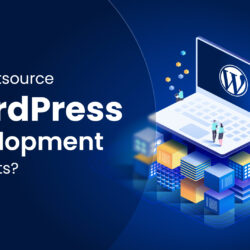Flutter for AR/VR Development: How to Build Immersive Apps

29 June
The world of Augmented Reality (AR) and Virtual Reality (VR) is rapidly expanding, offering exciting possibilities for immersive and interactive experiences. To tap into this emerging market, developers need powerful tools and frameworks that can simplify the creation of AR/VR applications. Flutter, an open-source UI framework developed by Google, provides an excellent platform for building immersive apps with cross-platform capabilities.
Understanding Flutter for AR/VR Development
Flutter, known for its ability to create visually appealing and performant mobile and web applications, is also a suitable choice for AR/VR development. By leveraging Flutter’s rich widget library, rendering capabilities, and cross-platform support, developers can create immersive AR/VR experiences that run seamlessly across multiple devices and platforms. Flutter’s versatility and flexibility make it a compelling choice for building interactive applications that blend the real and virtual worlds.
Advantages of Using Flutter for AR/VR Development
- Cross-platform development: Flutter enables developers to create AR/VR applications that can run on various platforms, including mobile devices, desktops, and the web, using a single codebase. This cross-platform capability saves time and effort by eliminating the need to write separate code for different platforms.
- Rapid prototyping and development: Flutter’s hot reload feature allows developers to see the changes they make in real-time, facilitating rapid prototyping and quick iterations. This feature is particularly valuable in AR/VR development, where constant testing and refinement are crucial.
- Rich and customizable UI: Flutter’s widget library provides a wide range of customizable UI components, enabling developers to design immersive and visually appealing interfaces for AR/VR applications. Flutter’s support for animations and transitions further enhances the user experience, making interactions in AR/VR environments more engaging.
- Performance and optimization: Flutter’s high-performance rendering engine ensures smooth and responsive visuals in AR/VR applications. The framework leverages the underlying platform’s capabilities, such as hardware acceleration, to deliver optimal performance across devices. Flutter’s reactive programming model also enables efficient handling of user input and real-time updates.
- SEO friendly: While building AR/VR applications, it’s essential to consider search engine optimization (SEO) to ensure visibility and discoverability. Flutter offers features and techniques to make your AR/VR apps SEO friendly, allowing them to gain maximum exposure in search engine results.
Building Flutter Apps for AR/VR
To build Flutter apps for AR/VR, follow these steps:
- Set up your Flutter environment: Install Flutter and the Dart SDK on your development machine. Set up the necessary dependencies and plugins for AR/VR development, such as ARCore, ARKit, or VR frameworks.
- Choose an AR/VR framework or library: Identify the AR/VR framework or library you want to integrate with your Flutter app. Flutter supports popular frameworks like ARCore, ARKit, and three.js, which provide essential tools for AR/VR development.
- Design the user interface: Use Flutter’s widget library to design the user interface of your AR/VR app. Consider the unique requirements of AR/VR environments, such as 3D object placement, gesture recognition, and head tracking, while creating a user-friendly and immersive UI.
- Implement AR/VR functionalities: Integrate the chosen AR/VR framework or library with your Flutter app. Implement features such as object tracking, gesture recognition, spatial mapping, and interactions in the AR/VR environment.
- Optimize for performance: Ensure that your AR/VR app performs well by optimizing resource usage and leveraging Flutter’s performance optimization techniques. Consider factors such as rendering efficiency, frame rate, and memory management to deliver smooth and responsive experiences.
- Test and iterate: Test your app extensively on different AR/VR devices and platforms to ensure compatibility and performance. Use Flutter’s hot reload feature to iterate and refine your code quickly.
- Optimize for SEO: To make your AR/VR app SEO friendly, consider adding descriptive metadata, relevant keywords, and appropriate structured data. Provide engaging and informative content to enhance search engine visibility.
- Deploy your app: Package your Flutter app for distribution, depending on the target platform. Follow the guidelines of the AR/VR framework or library you integrated with Flutter to deploy your app to AR/VR devices or app stores.





